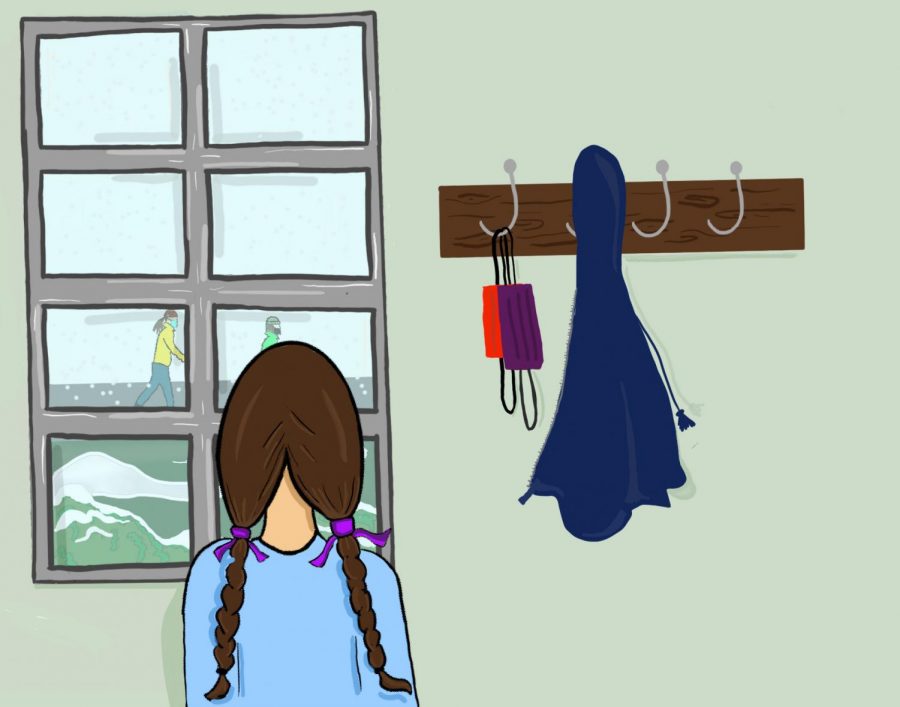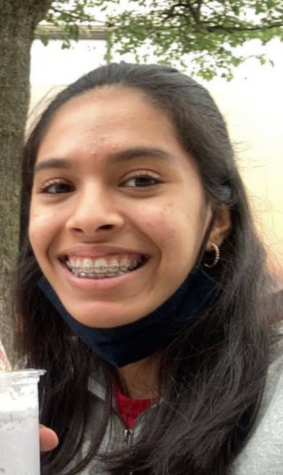As COVID-19 rages on, students fear winter months
Illustration by Valerie Larsen
November 16, 2020
The COVID-19 case count across the world has surged, reaching 54.3 million cases as of Nov. 15, and Evanston is no exception. As winter approaches, students are concerned about what the third wave of the virus might mean for their social lives and overall well-being.
“I’m really nervous that it’s just going to get so much worse, it’s going to spike and everyone’s going to get it. You know it was bad before; what’s it gonna be like now?” junior Ruby Winer says.
As of the Nov. 14, there has been a total of 1,838 cases and 253 active casts. a test positivity rate of 5.6 percent. There have been 81 deaths since March. As of Nov. 14, the seven-day average of daily confirmed cases in Evanston was 32.57 confirmed cases per day. Confirming 60 cases on Nov. 13 alone, Evanston has reached the highest number of confirmed cases in one day. Although cases are reaching their highest levels yet, Evanston’s positivity rate still pales in comparison with the rest of the state, which has a positivity rate of 14.7 percent.
“The fact that most people still will have a mask on tells me that Evanston has done a good job and is taking this virus very seriously,” chemistry teacher Gedion Yitref says.
According to the Chicago Tribune, Illinois has reached a second, worse wave of COVID-19 cases; for most states across the country, this is more like a third.
Nevertheless, students’ new normal continues, and they have found ways to socialize with their friends while staying safe. Numerous students have enjoyed social distanced activities, such as hikes, bonfires or just hanging out in someone’s backyard.
With winter approaching, these outdoor activities are increasingly difficult to partake in. Not only students, but many teachers and parents have been worried about how quarantine is affecting children.
“As a cross country coach, talking to the athletes [about how] this is the highlight of their day, being outside to being with their teammates, talking about how it’s very therapeutic, I am a little bit worried in terms of this virus [not] going away. What I think about when people aren’t going outside often is, ‘What will happen to their mental health?’” Yitref explains.
Students use various methods to stay productive and cope with e-learning. Even little things like going outside have changed the way students feel about their day.
“I’ve been coping with e-learning by going for walks and exercise,” freshman Skylar Kramer says.
As the country prepares for its next big spike in COVID-19, many are asking them-
selves—are we already in it?
“Many Evanston residents have taken this seriously, but some are finding ‘shortcuts,’” biology teacher Greg Ruber explains. “People have started to habituate. They’ve started to be like ‘Oh, this is normal, and now I can
find shortcuts.’”
Some students have also created pods of themselves and their friends where they socialize with each other, but no one else, as to make sure they can socialize while not causing a massive outbreak in the virus, an idea that will surely be helpful as the winter approaches.
“I hope that will make people distance better, but the problem is, if they hang out, it will be inside,” explains freshman Arielle Buzil.
The Evanston community has been doing a decent job in staying safe, but one can only hope that people continue to wear masks and put safety first.
“As we’re cooped up inside and don’t have as many options to go to, people will start to release that frustration in not healthy ways,” Ruber says. “Cabin fever is a real thing.”
Students are already having trouble socializing with the pandemic, and the cold weather won’t make it any easier. COVID-19’s third wave is here, and it’s getting worse.
“Being social is difficult to begin with,” Winer says. “So then doing that through a
computer can be so hard, and it’s frustrating.”










